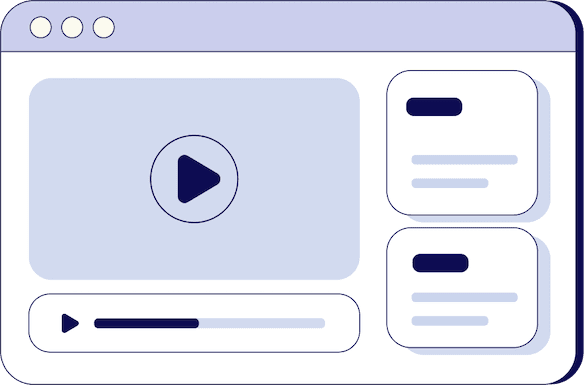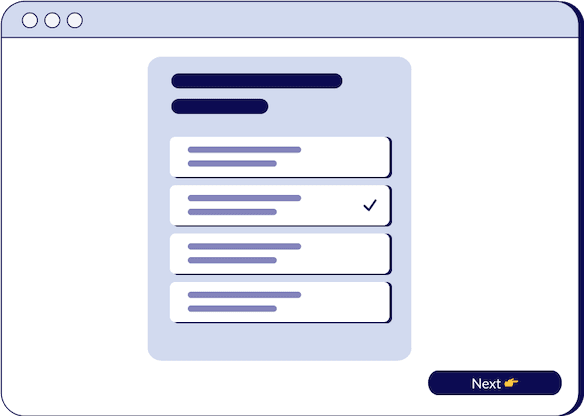
Cold Call Opening Line and Scripts From Patrick Dang
Patrick Dang
Sales Coach

- duration
- 8 min
- Average Score
- 102%
- Stars
- 5
For sales reps and account executives, the art of cold calling can seem daunting. It's often perceived as one of the toughest aspects of a sales job. However, with the right strategies and insights, cold calling can be transformed into a powerful tool for success. This comprehensive guide aims to double down on the nuances of cold calling, providing a roadmap for sales professionals to excel in this crucial aspect of their role.
The Cold Calling Conundrum: Embracing the Challenge
Cold calling is more than just picking up the phone and dialing numbers. It's about engaging with potential clients who might not be expecting your call and turning these unexpected interactions into fruitful business relationships. The essence of cold calling lies in its ability to open doors to new opportunities, despite its challenging nature.
A significant number of sales professionals cite cold calling as their biggest hurdle. This is where data-driven insights come into play. Understanding industry trends, consumer behavior, and effective communication tactics can dramatically improve the success rate of cold calls. It's about being prepared, informed, and strategic in every call you make.
Crafting the Perfect Prospect Profile
The first step towards effective cold calling is identifying the right prospects. This isn't a numbers game; it's a targeted strategy. By focusing on prospects who are more likely to need and appreciate your product or service, your calls become more efficient and effective. This targeted approach is a common strategy among top-performing companies like Oracle and Salesforce.
Creating an ideal customer profile is essential. This involves understanding the demographics, needs, challenges, and preferences of your target audience. A well-crafted profile helps in customizing your pitch, ensuring that you address the specific needs and pain points of each prospect. This level of personalization can significantly increase the likelihood of a positive response.
Mastering the Art of Communication
The initial few seconds of your call can make or break the conversation. Mastering your tonality and delivery in these critical moments is key. Your voice should convey confidence, friendliness, and professionalism. This sets the tone for the entire call and can be the difference between a prospect staying on the line or hanging up.
Practicing your introduction and key talking points can immensely improve your cold-calling skills. Recording and listening to your calls, or practicing with a colleague, can provide valuable feedback. This practice not only enhances your delivery but also builds confidence, making each call less daunting and more natural.
Engaging and Building Connections
Once you've mastered the introduction, it's about engaging the prospect in a meaningful conversation. The goal is to move beyond a scripted monologue and into a dialogue that resonates with the prospect. This involves asking open-ended questions, actively listening, and showing genuine interest in the prospect's needs and challenges.
Effective cold calling is akin to starting a collaborative discussion. It's about creating a scenario where the prospect feels comfortable and interested in continuing the conversation. Expressing curiosity or a slight need for assistance can be a great way to invite the prospect into a more cooperative and less confrontational interaction.
Tailoring Solutions to Prospect Needs
A successful cold call involves understanding and addressing the specific needs and pain points of your prospect. This requires active listening and insightful questioning. By identifying these key areas, you can tailor your pitch to highlight how your product or service can offer a viable solution.
Once you have a clear understanding of the prospect's needs, it's time to present your value proposition. This should be done in a way that is both informative and respectful of the prospect's time. Use real-life examples, case studies, or testimonials to demonstrate the effectiveness and benefits of what you're offering. This not only establishes credibility but also helps the prospect visualize the potential impact of your solution.
Closing with Confidence
As you conclude the call, it's important to summarize the key points of the conversation and propose the next steps. This could be scheduling a follow-up meeting, sending more information, or arranging a product demo. The close of the call should leave the prospect with a clear understanding of the proposed value and the next actions.
The ultimate goal of a cold call is to lay the foundation for a future business relationship. This means leaving the prospect with a positive impression of both you and your company. A successful cold call is one where the prospect feels that they have gained valuable insights and are looking forward to the next interaction.
In conclusion, mastering cold calls requires a blend of strategic targeting, effective communication, and a customer-centric approach. By honing these skills, sales professionals can transform the once-dreaded task of cold calling into
How Triple Session works
Training, Testing, & Feedback
Triple Session's proven formula accelerates your sales performance through consistent, organized practice, backed by measurable results.

Bite-Sized Knowledge
Our expert-led video sessions simplify complex sales concepts into easy-to-digest 5-15 minute videos for better retention.

Test Your Understanding
After each session, there will be a quiz to test your understanding and help you improve on any areas that need more attention.

Evaluate and Grow
Get progress snapshots after each quiz to track your improvements and achieve your sales mastery goals.